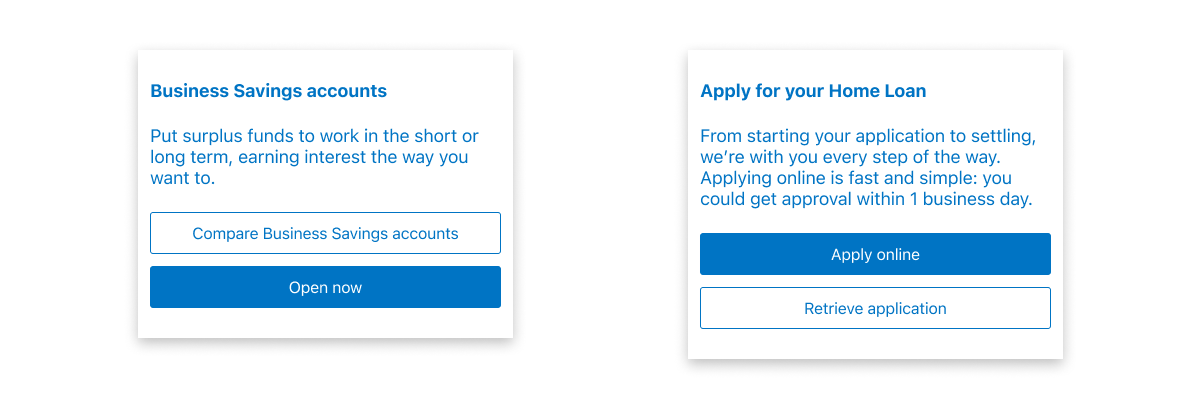Calls to action are used to get a person to perform an instruction.
CTAs should be short and action-orientated – using buttons and hyperlinked text.
For example:

Note: No full stops in CTAs but fine to use question marks.
Hyperlinks must be underlined unless they’re standalone text links, in which case we add a chevron.
Contextual links are best for accessibility and best practice (SEO & UX). Try to avoid using generic CTAs such as ‘Find out more’ and ‘Learn more’.
CTAs with specific descriptions are more accessible, SEO-friendly, and contribute to a better user experience. So, instead of saying ‘Find out more’ or ‘Learn more’, try using CTAs like ‘Explore accounts’ and ‘Discover EFTPOS’
Avoid directional navigation instructions. Instead, be clear on what you want the reader to do.
There are different ways a person could use a device e.g. someone who doesn’t use a mouse may not ‘click’ a link. Therefore, where possible, keep verbs appropriate to the device type.
When referring to signing into Online Banking or the Westpac App, use ‘into’, not ‘in to’.
For steps, use bold text for the exact wording on tabs, links and buttons.
For steps in body copy, use chevrons. Capitalise the first word after the chevron.
If there are more than 5 steps, switch to the list format. Also see Bullet points & numbered lists.